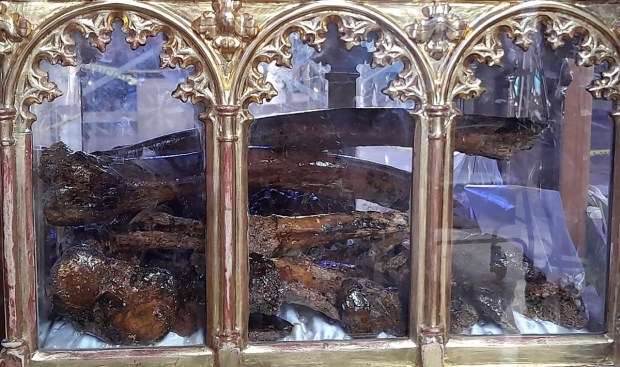Lenten Campaign 2025
This content is free of charge, as are all our articles.
Support us with a donation that is tax-deductible and enable us to continue to reach millions of readers.
Religious persecution in early 20th-century Mexico brought with it many martyrs who offered their lives to defend the Catholic Church and its freedom of worship. One of them was Blessed Elías del Socorro Nieves. Today, his relics are venerated in the diocesan shrine of Cañada de Caracheo, municipality of Cortazar, Guanajuato.
Humble origins
Mateo Elías Nieves was born in 1882 in San Pedro, next to the Yuriria Lagoon in Guanajuato. His parents were farmers. He soon expressed his desire to become a priest, but the untimely death of his father at the hands of criminals forced Mateo to leave school to work to help support his family.
It was not until 1904 that, in spite of his limited education, he was able to enter the Augustinian seminary of Yuriria. There, his efforts were crowned with the priestly ordination that he received in 1916.
While studying in the seminary, he struggled with an eye affliction that was making him blind. He was cured by God through the intercession of the Blessed Mother under the title of Our Lady of Perpetual Help (Nuestra Señora del Socorro). It was due to this healing that, when he made his religious profession, he changed his name to Elías del Socorro.
Priestly ministry
At the beginning of his priesthood, he exercised his ministry in several communities in the Bajío region of Mexico. Then in 1921 Fr. Elías del Socorro Nieves y Castillo was assigned as vicar to Cañada de Caracheo. This community is located next to the hill of Culiacán, which currently belongs to the municipality of Cortazar, Guanajuato.
The community was poor and lacked sanitary services and a school. However, Fr. Nieves worked joyfully among his parishioners, adapting to the situation.
Mass in a cave
In 1926 the famous Cristero War began after the president in office, Plutarco Elías Calles, created the "Calles Law." This legislation limited the functions of priests and forced them to leave their churches, which were closed to public worship.
Fr. Nieves decided to remain with his parishioners, hiding in a cave where he celebrated Mass and other sacraments. There he remained for 14 months.

Martyrdom
One morning, he was walking accompanied by two laymen, José Dolores Sierra and Jesús Sierra, who were brothers. They were stopped by a military detachment that discovered he was a priest, because under his white peasant clothes he was wearing his black clothes. They were immediately arrested.
At dawn on March 1, 1928, the prisoners and soldiers left on foot for Cortazar. Before arriving, the captain ordered the shooting of the Sierra brothers, who, after receiving absolution from the priest, died acclaiming Christ the King. Further on, under a mesquite tree (where a chapel stands today), the captain said to the priest, "Now it’s your turn. Let's see if dying is like saying Mass."
After praying for a while and distributing his belongings among the soldiers, Fr. Elías del Socorro Nieves was executed.
Beatification and diocesan shrine
On October 11, 1997, on the occasion of the beatification of Fr. Elías, priests and lay faithful transferred the relics of the Blessed from the chapel under the tree where he was shot to the parish of Our Lady of Sorrows, in Cañada de Caracheo. On October 12, 1997, Pope John Paul II beatified Fr. Nieves.
His relics rest in the parish, next to which the diocesan shrine of Fr. Nieves was built. On the occasion of the jubilee year for the 50th anniversary of the diocese of Celaya, a plenary indulgence can be gained by passing through the Holy Door at the shrine until April 18, 2024.










